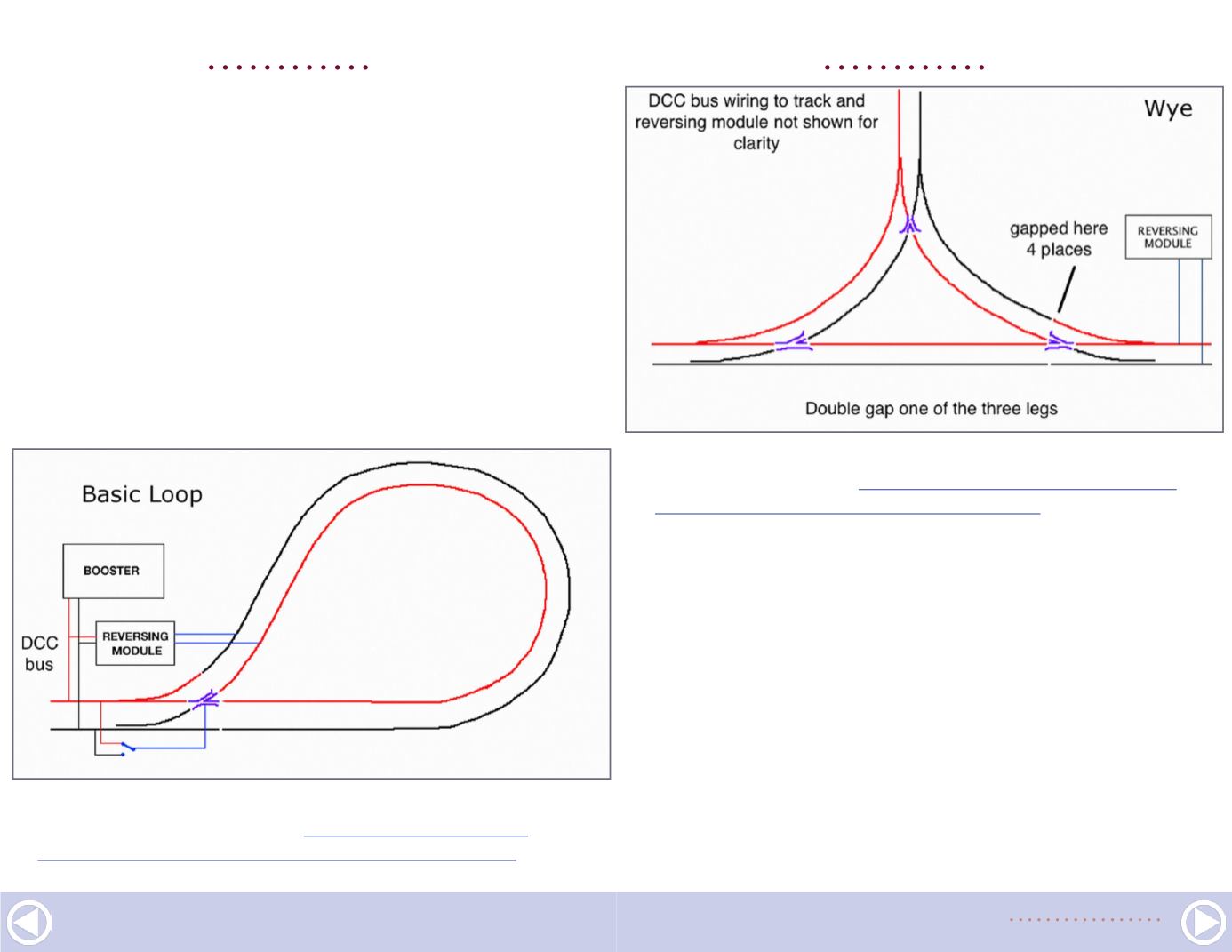
direction to run. Some folks think DCC doesn’t have a polar-
ity, inasmuch as you can put a loco on the track and select
forward and it will go forward no matter which direction it
faces. However, look at [1]. At the frog of the turnout there are
opposite polarities on the track in the loop and on the straight,
as soon as the turnout is thrown. If one uses a bulb to test for
power, it will light when connected between the red and black
sections of the outside rail (at the turnout). So, as soon as a
metal wheel hits this gap, the system will short.
The switch contacts in stall motors such as the Tortoise can auto-
mate the reversal of track polarity for either DC or DCC layouts.
With DC there is the caveat that the train needs to be stopped
when the turnout is activated. Otherwise the train will start
DCC IMPULSES |
4
1. Basic loop - adapted from drawing supplied by Tony Lam-
bert of the A19 MRC in the UK
.
2. Wye - adapted from drawing supplied by Tony Lambert of
the A19 MRC in the UK
.
running backwards as the turnout motor switch reverses the con-
nection to the track. Understand, with DCC there will probably be a
bit of hesitation for the short period of time while the switch motor
contacts do not connect any power to the track.
In other reversing situations such as wyes, the use of switches tied to
the turnouts isn’t nearly as simple and, therefore not recommended.
Turnouts have frogs. That is the name for the blue segments in [1]
and [2] track work where the straight and diverging rails cross. It
must be either electrically isolated (Peco calls them Insulfrog) or
have its polarity change (Peco Electrofrog) depending upon which
direction the train is headed, straight or diverging. It is the right rail
in one case and the left rail in the other.
DCC IMPULSES |
5


